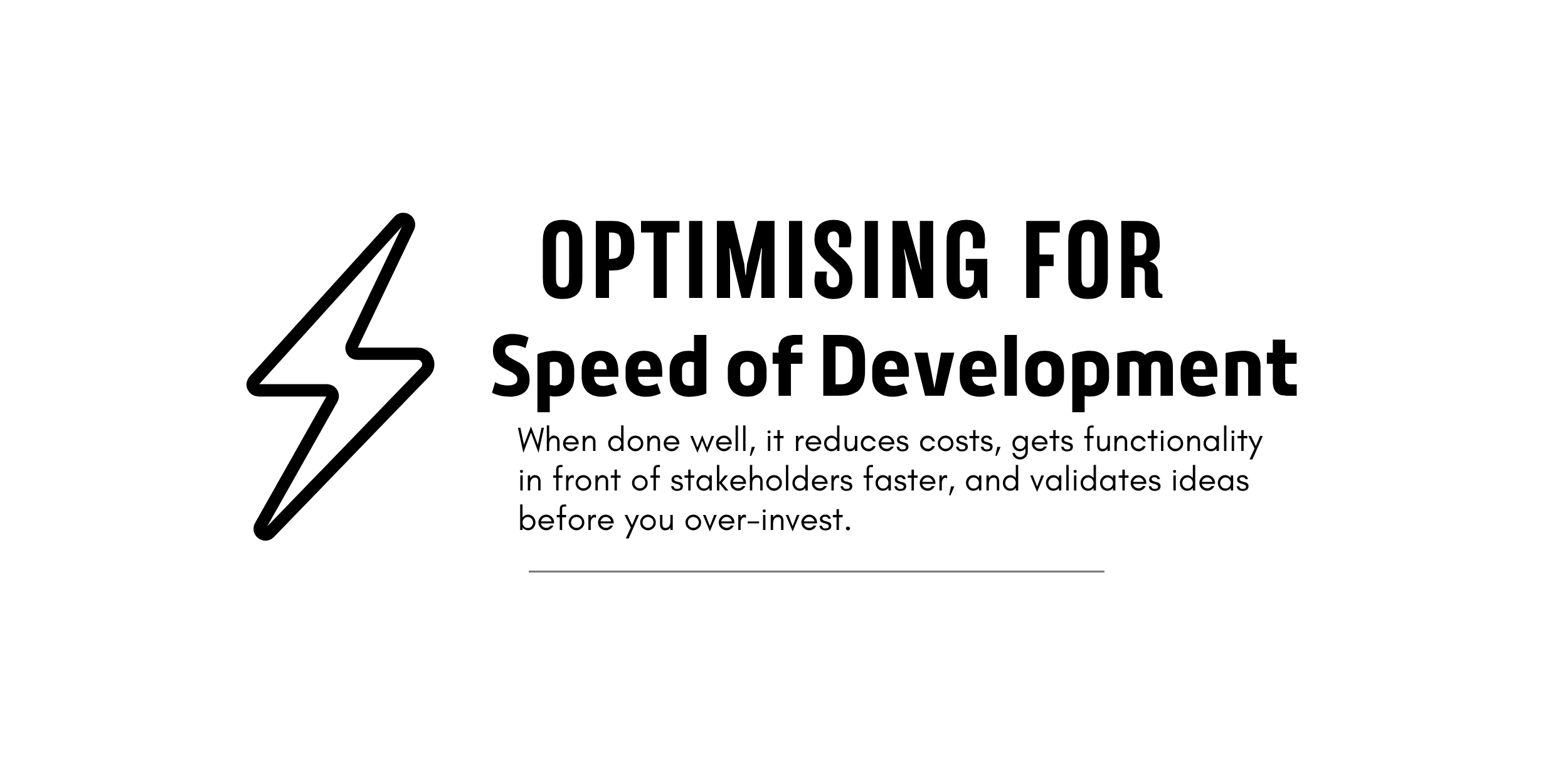Optimising for Speed of Development in Software Projects
Optimising for Speed of Development in Software Projects
Discover how speed of development shapes software success
Discover how speed of development shapes software success
Author: Jacob Boyce
Author: Jacob Boyce
Posted: 08-10-2025
Posted: 08-10-2025

When people talk about software development, the focus is often on runtime performance or cleaner code. Those conversations matter, but one critical factor often gets overlooked: speed of development.
For early-stage products, prototypes, or MVPs, development velocity is just as important as technical excellence. Done well, it reduces costs, gets functionality in front of stakeholders faster, and validates ideas before you over-invest.
At Jaegersoft, we know speed of development is its own art. Here are eight powerful levers you can pull to accelerate software delivery without sacrificing long-term success.
Manage Scope Effectively
Fast development comes from building only what matters right now. Managing scope is not just cutting features, it is about prioritisation.
Focus on high-value functionality that reduces risk or validates ideas
Implement thin end-to-end slices where possible
Be ruthless with “nice-to-haves”
This applies equally to features and non-functional requirements (NFRs). For example, not every MVP needs to support 100,000 concurrent users on day one. Choose what matters for your stage, and leave the rest for later.
Choose the Right Technology Stack
Technology choices can either accelerate or slow you down. Favour higher-level abstractions and frameworks that provide functionality out of the box, rather than reinventing the wheel.
Depending on the project, this might mean:
A single codebase with Next.js + Vercel
A backend-as-a-service (BaaS) like Firebase or Supabase
Even low/no-code platforms for simple workflows
The less custom glue code you need, the faster you can move.
Leverage Deep Knowledge
The fastest teams work with tools they know deeply. Familiarity removes cognitive drag:
Less time Googling
Fewer “gotchas”
Faster debugging
Sometimes, sticking with a well-known stack is faster and safer than adopting a “better” but unfamiliar tool.
Use AI Strategically
AI has become a powerful accelerator in modern software development. It is excellent for:
Scaffolding and boilerplate
Searching documentation
Learning new libraries or APIs
But AI is not perfect and it struggles with domain-heavy or integration-heavy work. The best developers use AI strategically, feeding it context, validating outputs, and knowing when to just write the code themselves.
Balance Software Quality
Speed does not mean cutting corners, it means applying the right quality at the right time.
Think of it like construction: scaffolding helps you move quickly and safely, but you do not build polished staircases just to climb between ladders.
Some level of technical debt is healthy and strategic. Overbuilding too early slows you down instead of helping.
Invest in Tooling & Automation
Manual workflows kill momentum. Modern development teams rely on automation to free up time and mental energy:
CI/CD pipelines
Code generators
Linters
Automated deployments & scripts
These compound productivity gains across every developer, turning repetitive tasks into background noise.
Increase Decision Velocity
Nothing stalls progress like slow decision-making.
Big, hard-to-reverse decisions deserve care
Small, reversible ones should be made quickly by the people closest to the work
Empowering developers to act fast keeps feedback loops tight and projects moving forward.
Foster Strong Collaboration
A mediocre plan executed together beats a brilliant plan executed in isolation. Poor communication leads to duplication, neglect, or endless rework.
Strong collaboration comes from:
Clear ownership of features
Fast, focused code reviews
Short PRs
Choosing the right channel (chat vs. meeting vs. email)
Keep communication friction low and momentum high.
Final Thoughts
These are just eight of the many levers teams can use to optimise speed of development. Even adopting one or two can create a huge boost in momentum.
At Jaegersoft, we focus on optimising outcomes by combining speed, quality, and sharp decision-making. That means shipping early, validating quickly, and using the right tools and processes to stay focused.
Things like managing scope, clean architecture, deep knowledge, strong collaboration, and decision velocity all play a critical role, especially in early-stage products and internal tools.


